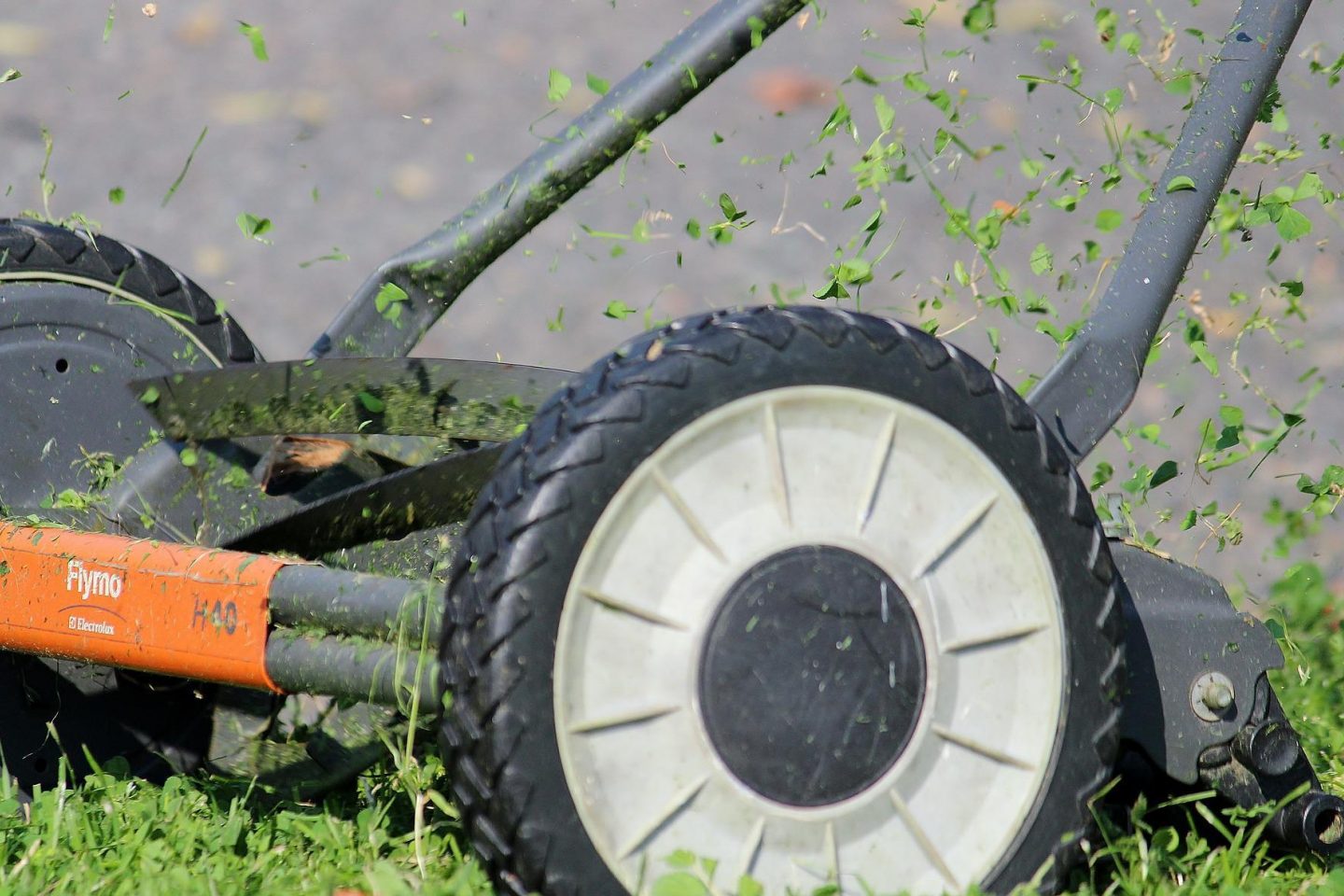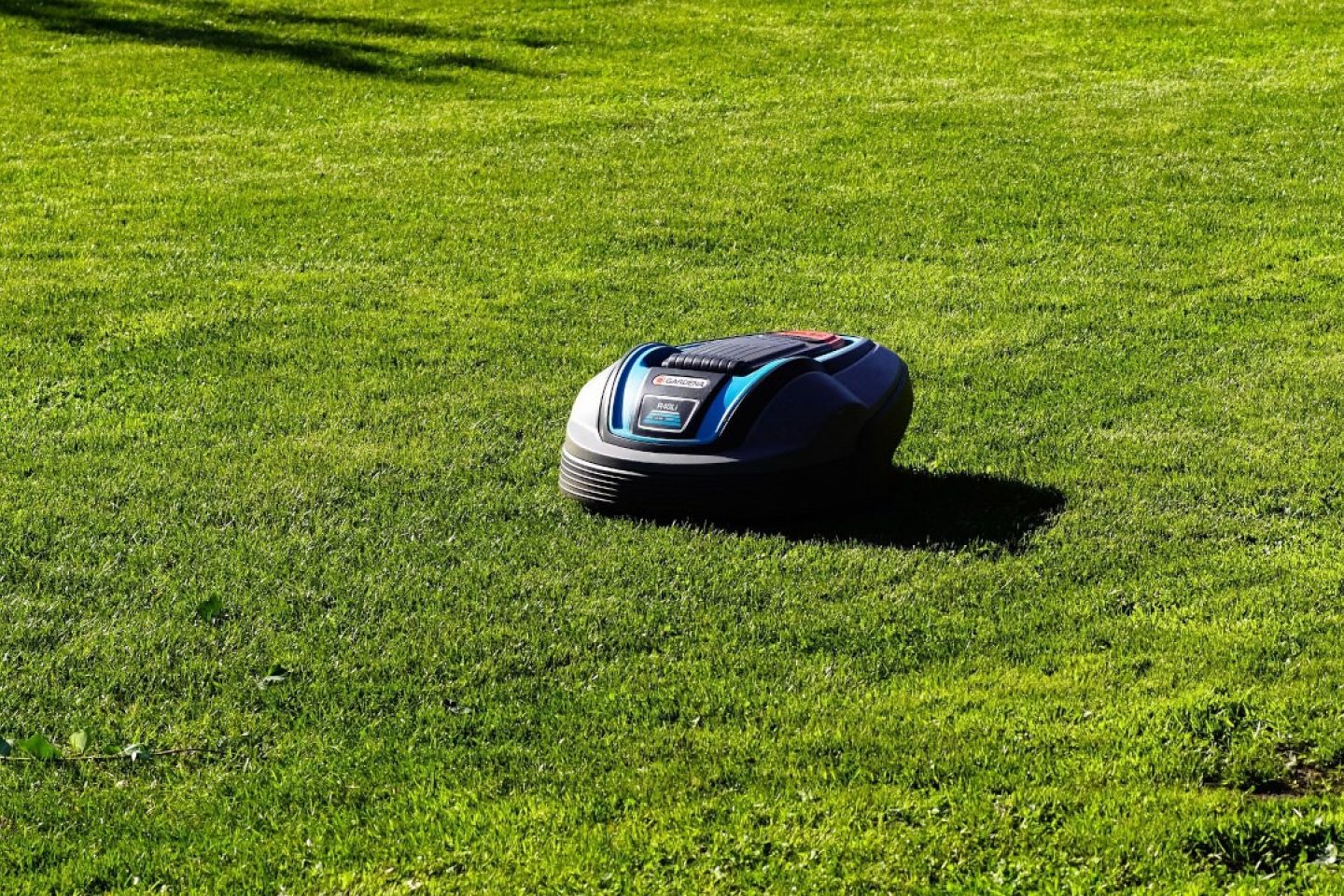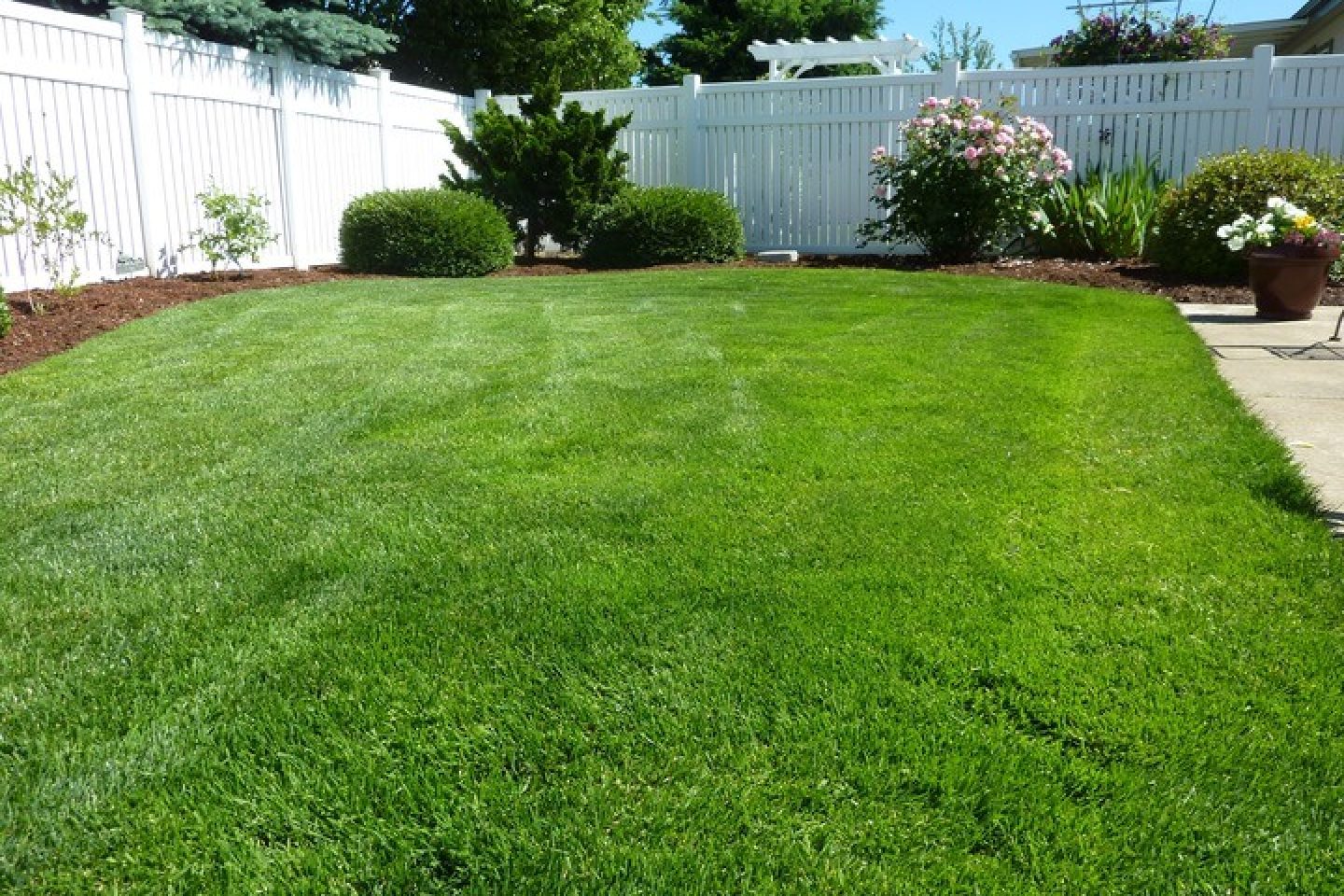Helpful Information
Timing: Spring, summer, autumn
Where to do it: Outdoors
Garden space: Small garden, large garden

Timing: Spring, summer, autumn
Where to do it: Outdoors
Garden space: Small garden, large garden
Essential items
Optional items
One of the most important ways to make cutting the grass easier is to choose the lawn mower or tool that is right for you. It is worth taking time on this, as it’s a major item in your tool kit.
It is possible to cut the grass without a lawn mower if you have a very small lawn. See below for options.
Grass strimmers or long-handled lawn shears

Suits: small lawns. A lawn mower is generally easier for medium or large lawns.
Pro:
Con:
Search for grass strimmers online
“I recommend a battery operated grass cutter – you can sit and do small patches at a time. Mum loved using this.” – survey respondent, gardening and dementia
Electric lawn mowers
Suits: small, medium or large lawns
Pro:
Con:
Search for electric lawn mowers online
With most electric lawn mowers, you have to press and hold in a safety button before you start the mower with a lever. On many models this can only be done using two hands at once. Try out the controls before you buy.
Hand push lawn mowers

Suits: small or medium lawns
Pro:
Con:
Search for hand push lawn mowers online
Robot lawn mowers

Suits: small or medium lawns
Pro:
Con:
Search for robot lawn mowers online
Petrol lawn mowers
Suits: Medium or large lawns
Pro:
Con:
Search for petrol lawn mowers online
Ride on lawn mowers

Suits: large lawns
Pro:
Con:
Search for ride on lawn mowers online
Always wear closed toe shoes when mowing the lawn. Think through the safety features before starting. Pay close attention to what you are doing and what is around you while the mower is in use.

In some ways, mowing a lawn is quite intuitive. If you walk your lawn mower up and down the lawn, you will be able to achieve a decent mow.
There are some things to think about that can help achieve a lovely finish, or make mowing the lawn easier to do.
Many gardeners choose to edge their lawn the same day they mow to create a neat, tidy appearance.
It makes it easier if you edge the lawn first. Then, when you mow the lawn, the mower will pick up edging cuttings at the same time. Read our guide to edging for more advice.
Before thinking about mowing, it’s worth thinking about your lawn space. Is it a size and shape you can comfortably manage? If not, you may want to reduce the quantity of lawn in your garden, or at least make the shape simple. A rectangular lawn with a path down one side is the most straightforward to maintain.
Think about any obstacles and large hazards in the way, such as a large stones or benches. If these cannot easily be moved out the way before mowing you will need to go around them, which can make it harder.
Mowing and lung conditions or allergies
You may have a lung condition or allergy that is made worse by mowing the lawn. There are a few options to consider if this is the case:
How often to mow

There is no right or wrong answer for how often to mow. It will depend how neat or long you like your grass to be (see below).
Starting in early spring when the grass gets long again, you may want to mow once a week. This can continue all the way into late autumn. You could reduce this to mowing twice over the whole summer. This will help create a lawn that produces flowers and is inhabitable by wildlife.
Don’t mow the lawn in wet weather or frost. This will clog up blades, compact the soil and cause damage to both your mower and lawn. It’s best to be a fair-weather mower.
Mowing less often reduces the effort required as well as helping nature. It has become popular among some gardeners to do ‘no mow May’. This simply involves not mowing the lawn for the whole of May, with the idea that wildlife can thrive.
Grass height
Most lawn mowers allow you to adjust the height of the blades. This means you can choose to cut the grass longer or shorter.
Generally, this is a question of personal taste. If you are a wheelchair user, avoid leaving the lawn long as this will inhibit moving over it.
The first time you mow the lawn in spring, it is recommended to set the blades as high as possible so the grass stays quite long. This is better for its health as it recovers after winter.
It is also a good idea to leave the grass longer during the hot, summer months. This will give it a better chance of not dying and going brown in the heat.
Even if your lawn goes a yellowy brown in high summer, don't worry. It will likely return to a familiar green after a couple of weeks of good rain.
Get mowing
When mowing, the goal is to have evenly gone across every part of the lawn.
Mowing can be quite a physical job. There are a number of ways you can make it easier to do.
Collecting grass cuttings

If your lawn mower has a bag or catcher at the back, you will need to empty it a number of times during each mow.
Place grass cuttings on your compost pile if you have one. These are a great form of ‘green’ material. Read our guide to making compost at home for more information. You can also put them in the garden waste bin if you don’t have a compost pile.
If you are not using a grass catcher, or are using lawn shears or a strimmer, you must decide what to do with the cut grass. You could pick up the grass later using long-handled leaf grabbers. Or, leave it on the lawn where it will act as a mulch.
If your lawn has a bag or catcher, you can choose to take it off and mow without it. This makes the lawn mower easier to move, but may mean you get cut grass flying back at you when you mow.
If you are using a grass catcher, take your mower to your compost pile before emptying it. This saves carrying a heavy catcher across the garden.
As well as mowing, your lawn will benefit from some other maintenance activities each year, such as feeding.
Read our guide to lawn care for advice on all the activities that add up to a healthy, green lawn.